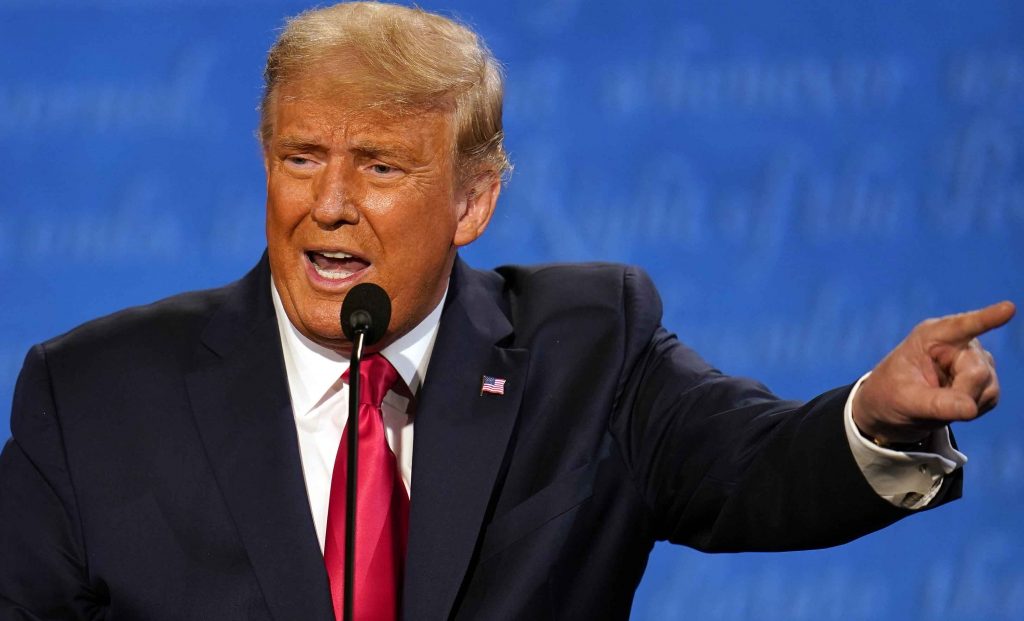New York: US President-Elect Donald Trump has threatened to impose 100 per cent tariffs on BRICS countries if they develop a new currency or adopt another to replace “the mighty dollar” and effectively bar them from American markets.
“There is no chance that the BRICS will replace the US Dollar in International Trade, and any country that tries should wave goodbye to America,” he posted on Truth Social Saturday.
Threatening to close the US market to India and the other eight members of BRICS, he wrote with misplaced capitalisation of words in his style, “We require a commitment from these countries that they will neither create a new BRICS Currency, nor back any other Currency to replace the mighty US Dollar or, they will face 100 per cent Tariffs, and should expect to say goodbye to selling into the wonderful US Economy.”
Trump’s warning to BRICS — after threatening higher tariffs on imports from China, Mexico, and Canada — is premature.
External Affairs Minister (EAM) S Jaishankar has already categorically ruled out the idea of a common BRICS currency.
“There is no idea of a BRICS currency. Currencies will remain a national issue for a long time to come,” he said last year ahead of the group’s summit in Johannesburg.
India is the second-biggest economy in BRICS.
Brazil’s President Luiz Inacio Lula da Silva, nevertheless, went on to propose a common currency at the Johannesburg summit, but it has made no headway.
During his campaign, Trump had asserted that the dollar faced threats to its future as the world’s premier trading currency and said that President Joe Biden was ignoring it.
“The idea that the BRICS Countries are trying to move away from the Dollar while we stand by and watch is over,” he said in Truth Social post.
His warning to BRICS countries is more like a loyalty test to see which countries would publicly take the stand India already has and a pre-emptive warning to Beijing.
BRICS, an acronym from the names of its first set of members — Brazil, Russia, India, China, and South Africa — expanded this year to include Iran, Egypt, Ethiopia, and the United Arab Emirates (UAE).
Several other countries have applied to join BRICS, which is making headway as an economy-focused organisation of the Global South.
With members in a wide range of stages of economic development and types of economies, creating a common currency would be difficult.
Accepting the currency of one member as the group’s trading currency would be impossible.
China, which is the largest economy and the biggest trading country in the group, would tend to dominate with its yuan, which India and some of the other countries will resist.
The US-led sanctions on countries like Russia and Iran helped grow some bilateral trade in non-dollar currencies.
Fuelled in part by US sanctions against Russia, India has paid for its oil imports from Russia with a mix of rupees and UAE dirham.
An Indian oil importer initially made some payments in yuan, and although Russia reportedly wanted payments in the Chinese currency, the Indian government has banned it, illustrating the difficulty of adopting a BRICS currency.
The European Union has the euro, but it is for a unified economic unit –which BRICS is not and cannot be — and most of their external trade is pegged to the dollar.
In addition to being the preferred currency for trade, the dollar is the main currency in which countries hold their reserves.
According to an International Monetary Fund publication in June, the dollar continues to have an “outsized role” in the world economy, but there has been an “ongoing gradual decline in the dollar’s share of allocated foreign reserves of central banks and governments.”
Now, about 60 per cent of the reserves are in dollars.
This relates to its role as the world currency reserve, and the decline is due to “fragmentations” and reserves being parked in currencies like the yuan, South Korean won, and the dollars of Singapore, Canada, and Australia.
IANS
